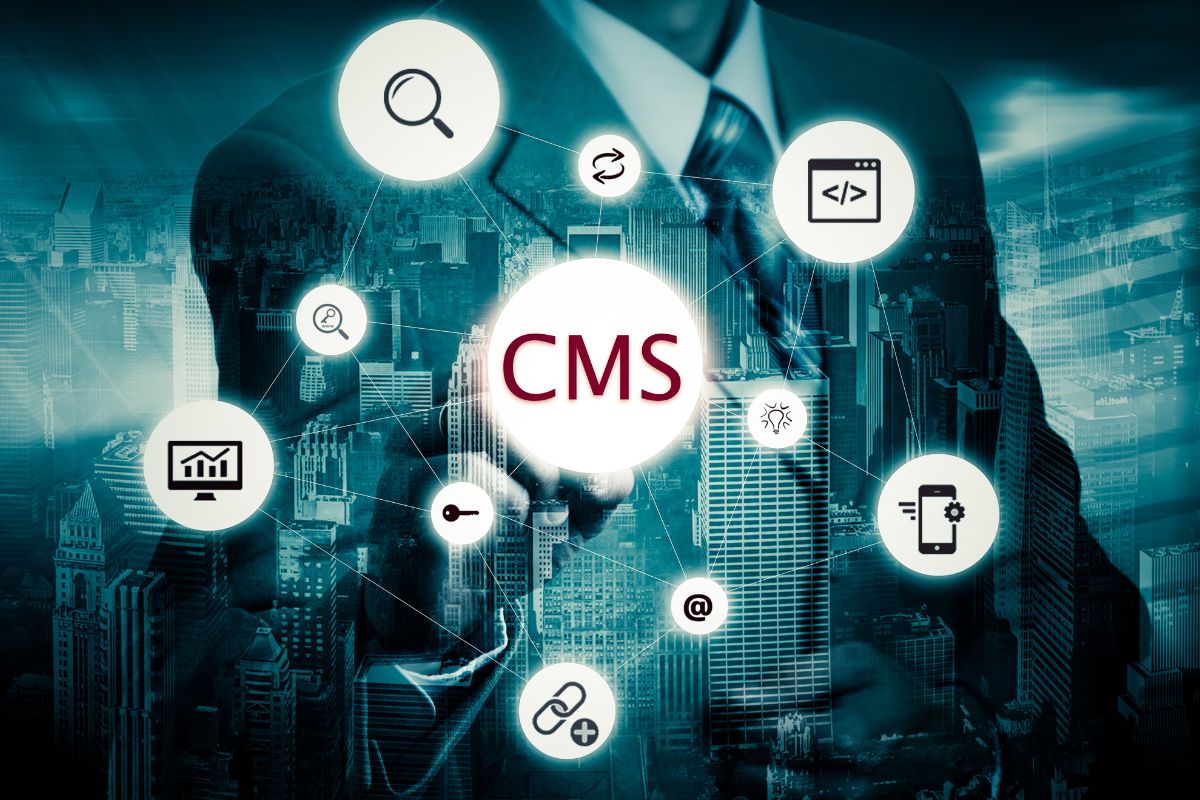Omnichannel customer experience has seen rapid growth in the last few years, and businesses continue to look for ways to offer their services through different devices.
If a business does not provide the right content through the correct channels, then customers often do not convert.

Marketing teams need to adapt to this demand and they need to create personalized content. However, traditional content management systems (CMS) are not designed to push out content through a range of channels.
That’s where the concept of the headless content management system comes in. We take a look at what a headless CMS is, and in what scenarios you should or should not use one.
What Is A Headless CMS?
With a traditional CMS, the frontend of the website is linked with the backend, and marketers can manage all content through the back of the CMS.
In comparison, a headless CMS decouples this connection, and content authors can create and manage content in one place, while web developers work on various presentation layers of the website to display to users.
This flexibility allows you to show content on a large range of devices, whether your users is on a standard desktop, mobile phone or app.
Content can even be delivered through smart speaker or digital kiosk screens.
While working with a centralized content repository does make it much easier to create, manage and reuse content, the implementation and ongoing maintenance of a headless CMS does require some specific knowledge and resources.
When You Need A Headless CMS
Many developers consider headless CMS to be the future of websites. Here are a few situations when you should use a headless content management system.
Front-End Flexibility
The majority of traditional content management systems have only one frontend display and content managers can use only this one layer to create and manipulate content.
This creates a number of issues when a company wants to serve content to different devices effectively.
Content managers and developers are tied to rigid templates which limit marketers in what they can do with their content, and what experience they can show to customers.
A headless CMS does allow frontend developers to get away from the single-framework approach, and design different layers for individual device types.
This allows marketers to make use of these layers and target customers with personalized content.
Future-Proof Technology
A headless content management system is effectively an API-driven CMS which is part of the latest technology.
When a business invests in a headless CMS, then it can future-proof its content management operations more easily.

And headless content management systems do not push developers into certain frameworks, so they can use whatever works for the customer experience.
If you want to make sure that the way you manage your content isn’t going to be outdated in a few years time again (when you will have to invest for something new), then it’s a good idea to go with a headless CMS.
Thanks to its API approach which essentially connects different systems with each other, a headless CMS allows developers to replace or upgrade components individually. This can save a lot of time and money in future.
In addition, a headless CMS is able to support future technologies, such as virtual and augmented reality as well as machine learning.
Marketing Velocity
There is no doubt that we produce more and more content, and this content needs to be updated regularly, and delivered to a greater variety of devices.
One of the biggest advantages with headless CMS is that content managers update content in one place once, and it gets published everywhere. No need for duplicate work to support several touchpoints.
This does not just save marketers time but it also reduces the risk of the content being wrong or outdated.
The time savings can be used to create a greater amount of content with a more personalized, targeted approach.
No Dependency On Developers
With a traditional CMS, content managers had to raise tickets if there were any content updates required.
These tickets then went to the IT department, where they were prioritized and added to the next release schedule.
Many modern content management systems, including headless CMS, allow content managers to change content directly without raising any technical query tickets.
This means that marketers have much more control over their content, and this reduces the burden on IT and web development to sort out small issues.
Web developers can focus on essential development tasks, and this makes a headless CMS also a great asset from an operational perspective.
When You Might Not Need A Headless CMS

Although a headless CMS does have a range of advantages, there are also some scenarios where a company is simply not ready yet to change over to this type of CMS.
Here are some situations where it’s better to choose a traditional CMS solution.
Requires Technical Expertise
With traditional CMS, content managers had the advantage that websites could be built very quickly and easily.
In comparison, with a headless CMS platform, you will need the knowledge of a front-end developer who can design and build the different presentation layers of your site, mobile app and any other medium where content should be delivered.
This does require a significant amount of resources, and many small and medium sized businesses do not have the budget to fund a team of developers or outsource web development.
But this issue does not stop with smaller companies. It also affects large corporations and organizations whose web developers may only be trained in traditional CMS technologies.
That’s why, it is a good idea to choose a CMS with strong integration functionality.
No Visualization For Content Managers
One of the biggest drawbacks with a headless CMS for content managers is that there is no way of previewing your content.
This makes it very difficult to know exactly what the content will look like, especially when you are building a new website.
Similar to our first point about skilled developers, you will need marketers and content managers who are trained in managing a headless CMS.
Your Business Isn’t Ready Yet
Running and maintaining a headless CMS does require a fair bit of investment in funds and resources.
This means that your business needs to be a certain size and at a certain development stage to be able to invest in this type of content management system.
If a company isn’t quite ready for this step yet, then it’s better to focus on fewer channels and providing content to these channels.
It might also be worth considering a phased move to a headless CMS only on your main channels.
This will allow your developers to familiarize themselves with the technologies, and you can expand into other channels at a later stage.
Final Thoughts
There is no shortage of headless CMS options on the market, but every business owner should find the right solution that matches with business needs.
It’s important that when you move to a headless CMS, you need to make sure that it works for your business and the user experience you want to deliver to your customers.
While a headless CMS is a great solution for omnichannel content marketing, there are a few instances where businesses may be better off with a traditional CMS for now.
- The 20 Best Blogging Courses That Are For Beginners - December 7, 2022
- 20 Best WordPress Plugins For Blogs For Effective Blogging! - December 7, 2022
- 5 Excellent Affiliate Marketing Courses To Learn - December 6, 2022








